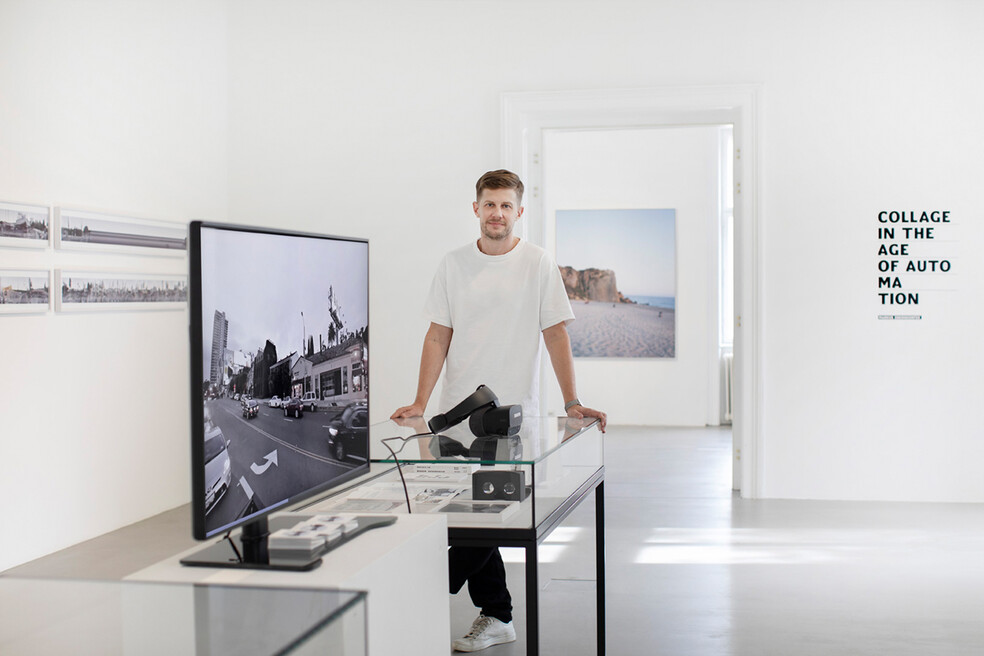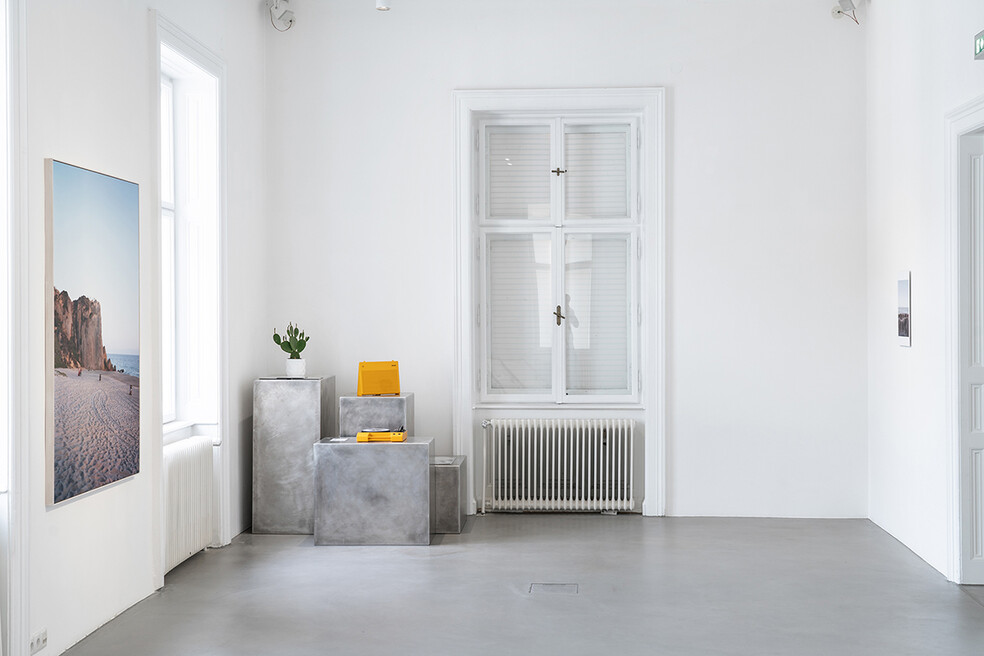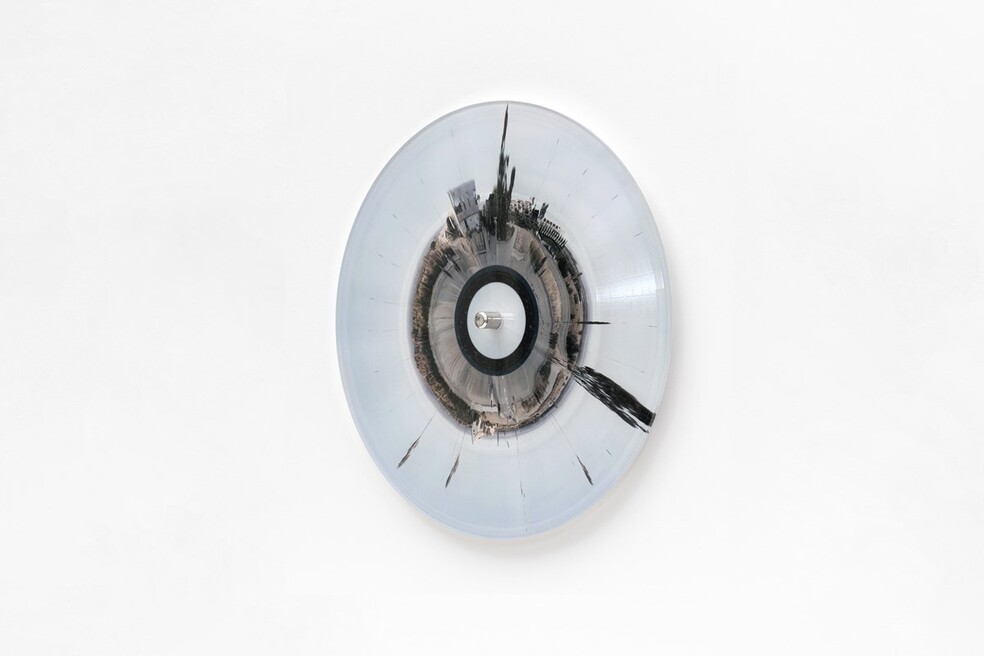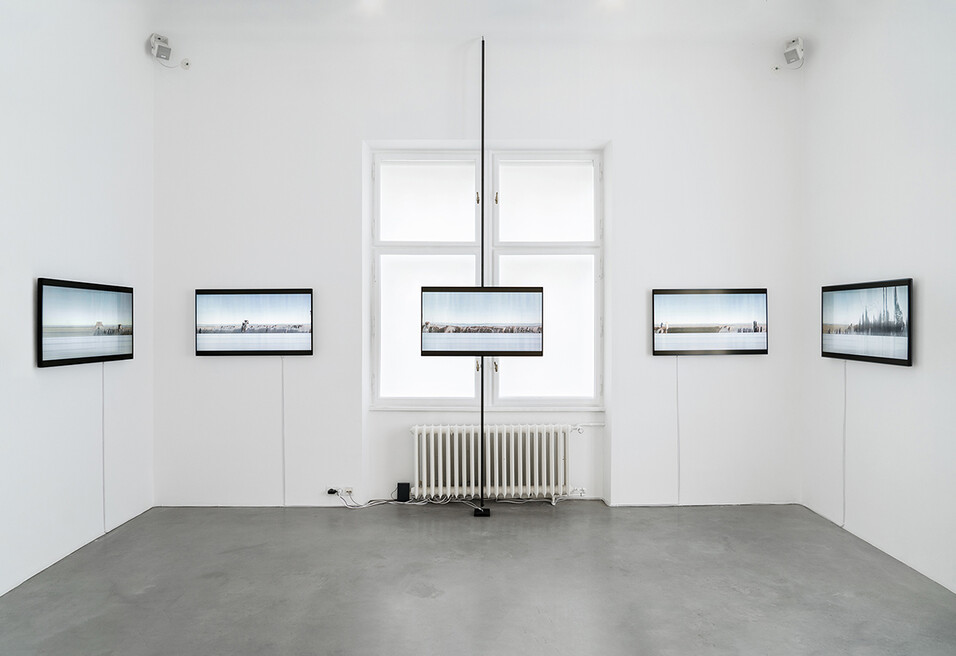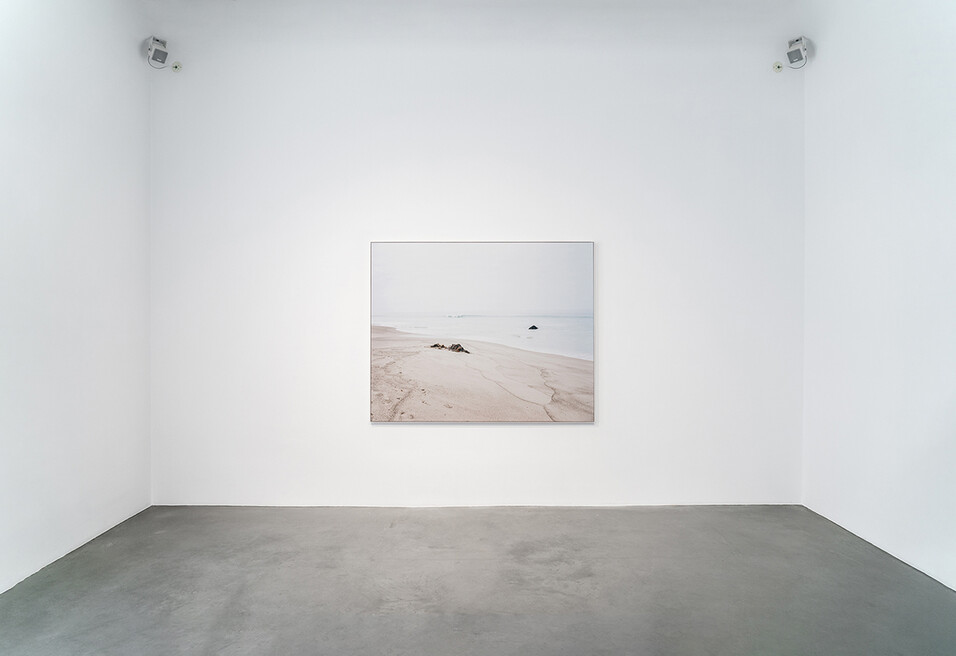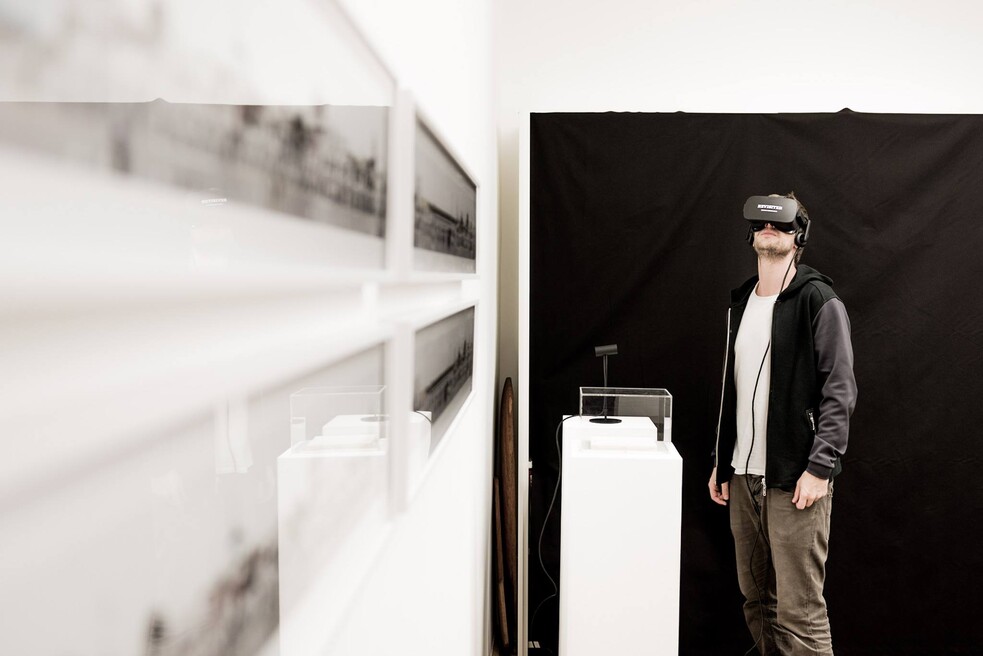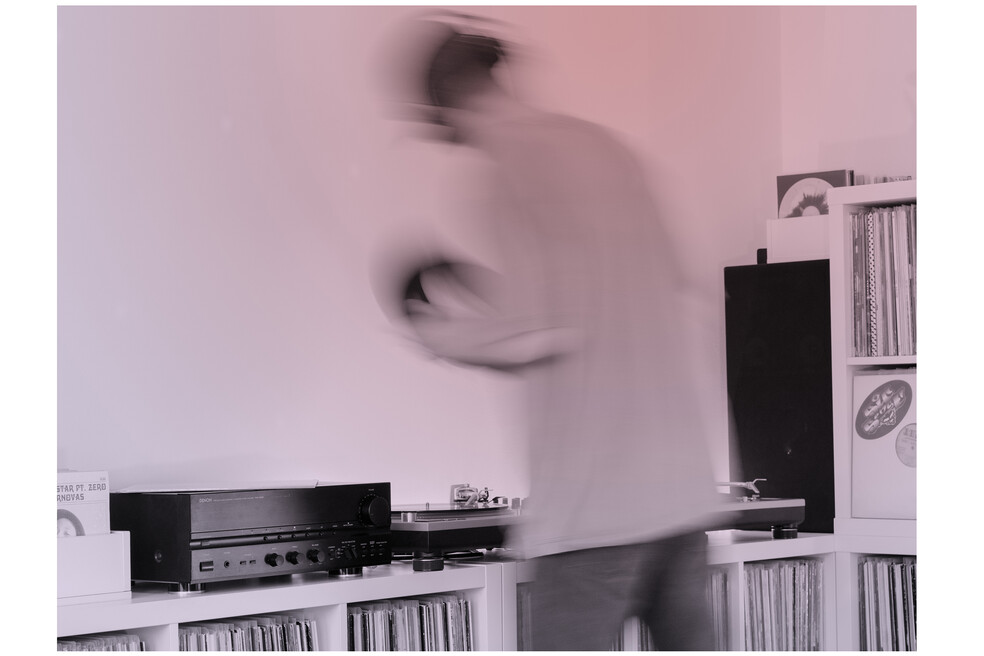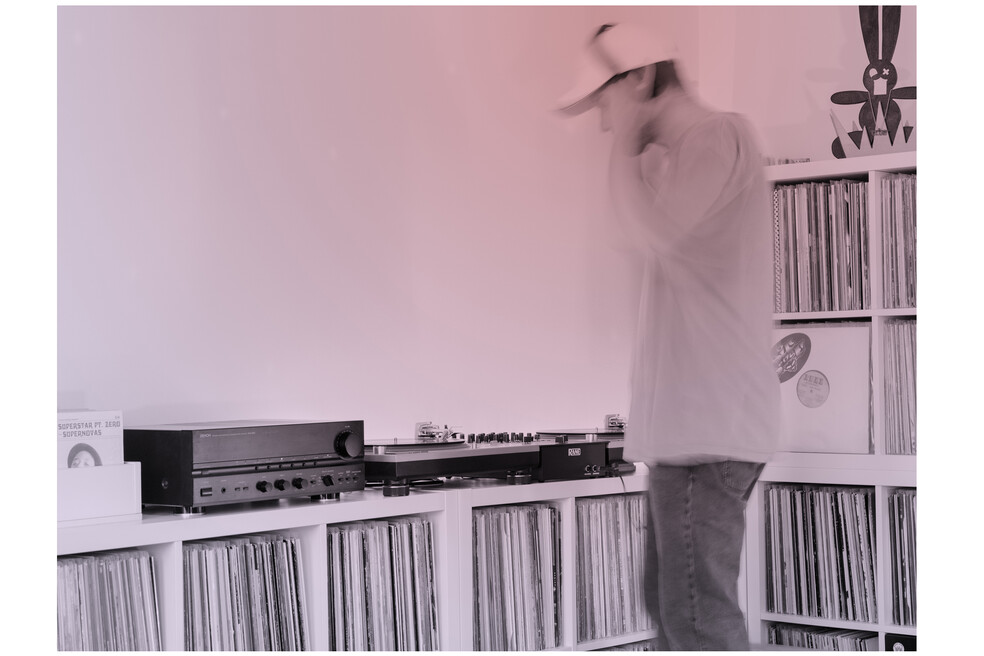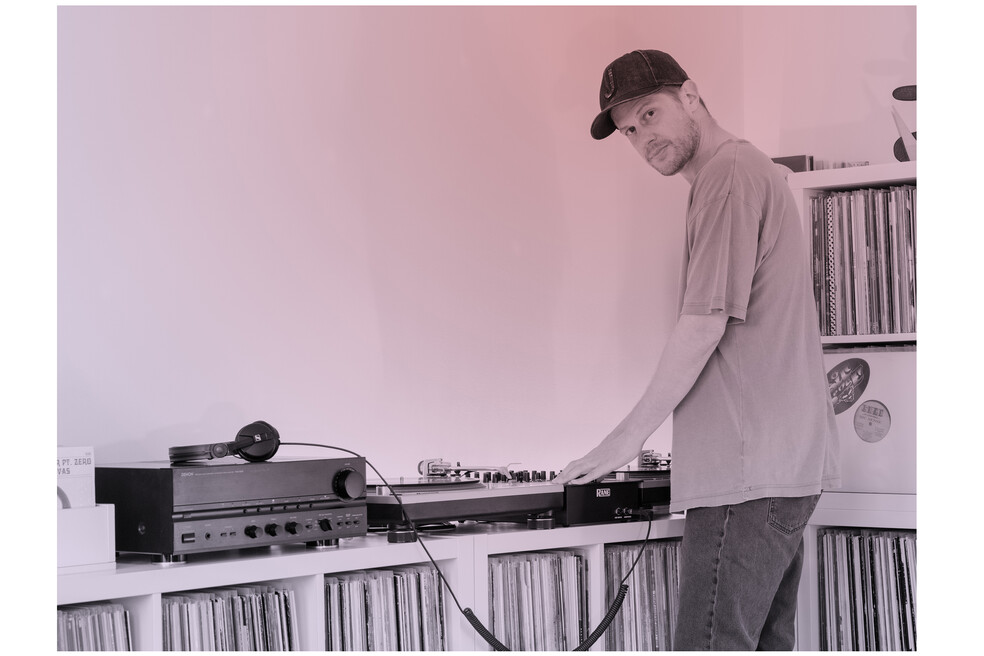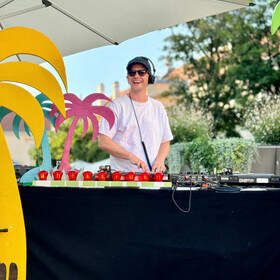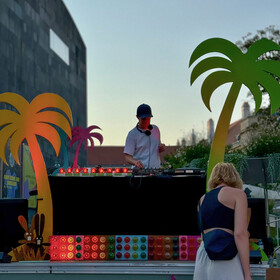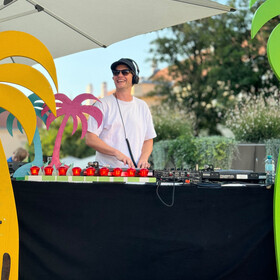
Markus Oberndorfer on the appeal of depth and the creation of emotional spaces in his art and music
An interview with visual artist and DJ Markus Oberndorfer aka LENS J, who will present a selection of his favourite vinyl records on the MQ Summer Stage on 15.07.2024.
In your artistic work, you focus on photography and audio-visual media. How should observers experience your works, what can they take from it?
As I see it, every experience is subjective, a matter of personal perspective and dependent on what has been experienced and learnt. I would say you can take a lot away from it. What, is in the eye of the observer and his or her interest to deal with what is presented to them.
Explained using the example of music: you can surrender to the mood of a piece of music, but you can also try to interpret it, understand the lyrics or take extracts from it with you along the way. Similarly, I hope that my works trigger something in the audience. If you succeed in doing that, then you've already achieved a lot as an artist. If you want to go deeper, you have to take the time - as with everything else - to open up something for yourself or read accompanying texts. My artistic work is an attempt to better understand the world around me, which feels more and more complex every day. If I can help others to do so, I'm happy.
For Ars Electronica, where parts of my project „REVISITED“ were shown in 2019, my work was described as follows: "Markus Oberndorfer's creative explorations include photographs, 360° VR videos, spacetime collages in the form of prints and video panoramas, accordion books, music and much more. They are an expression of a complex investigation into our contemporary media landscape and shed light on the massive influence that media, time and its concepts have on us, our living environment, its representation and ultimately also on our experience and perception."
My works are an attempt to approach moments that have touched me. Sometimes in the form of a single photograph, sometimes in the form of work cycles developed over years, which deal with what I have documented as well as with the media I have used.
You can only offer observers an entry point into the worlds offered to them, from which they can advance further if they wish. Just like DJing or music. An interaction of "call and response". It's not just up to the DJ whether a party works, but also the audience and their willingness to engage with something new.
Some artists work with moments of shock; in my work, I tend to try to use aesthetic components that usually conceal complex concepts, a lot of research, thoughts on history, memory and media theory. At best, I create emotional spaces in which observers find themselves, feel thrown back on themselves or with which they associate something I intended - regardless of whether they are looking at a photograph, diving into audio-visual immersive 360-degree environments or viewing exhibitions with several works or cross-references.
Your label „Darkroom Debuts“ operates at the interface between visual arts and music, why does that appeal to you?
Sound and music play a key role in creating emotional spaces and can have a significant influence on our perception.
Music does something to people, just like any other medium. Marshall McLuhan, who I quote in texts and whose word samples from lectures I have incorporated into music productions, has worked intensively on this. His title "The Medium is The Message" became "The Medium is The Massage" due to a misprint. And that's exactly what it is. A message, but also a massage of the senses.
The work of Stan Douglas made me realise that music doesn't always have to be experimental to be part of the art context, but can also be something I listen to in everyday life. In particular, it was „Klatsassin“. I can remember the exact moment when I suddenly heard a dub track by Rhythm & Sound at the Stuttgarter Kunstverein in 2007, which I have on vinyl at home. I had already attended lectures on psychoacoustics at the University of Vienna out of interest alongside my studies at the Academy, but that was a key moment from which I tried to integrate music more and more consciously into my projects. Especially with regard to its potential as an atmosphere-creating medium.
I founded my label to unite releases related to my work in one place. I don't do classic label work with it: it only releases music from producers that I invite to contribute to my visual art or that originates from me. For this I use the pseudonyms „SirLENSalot“ or „LENSon Piquet“.
The name "Darkroom Debuts" is a reference to the analogue colour darkroom where I spent two decades with photography and music. The catalogue numbers of the records, which always start with DROOM (which means DREAM in Dutch), also refer to this. You have to be aware that it is always completely dark in the colour darkroom. Unlike in the black and white darkroom, you can't work in red light and are in a kind of "in-between space", similar to an aeroplane. At least that's how it was and is for me. You interpret a past moment, the light on a negative, the way you imagine it and the way you remember it. Also through and with music. I have incorporated this experience into my work „Sense of Balance“.
Some releases, such as the REVISIT soundtrack associated with the REVISITED project mentioned above, are on the one hand the musical substructure for a fictional radio programme in the 360° VR installation "Staging the Ordinary", and on the other hand part of a well thought-out visual collage concept that deals with space, time, rhythm and perspective. Explaining this in more detail would go too far, but the appeal for me lies exactly in this going into depth and challenging myself. However, I need these thought constructs above all for myself and for the content-related and visually precise development of my often extensive work groups, which then, in the best case, lead observers to feel something that moves them to reflect.
As already mentioned, you can only offer others an introduction - as this interview does. Anyone who wants to know more can ask me specific questions, as you do, or find and read pictures and texts on my website By the way, it's currently being redesigned and made more functional.
Where does your enthusiasm for vinyl come from?
It all started with the four or actually five elements omnipresent in 90s hip-hop, including rap, b-boying, graffiti and knowledge of self as well as djing. Back then, you couldn't be a DJ without vinyl records. It was part of the culture. Apart from the music you wanted to have and listen to, records were also tools. Accordingly, some of my older records also look like this.
Over the last 20 years, my enthusiasm for vinyl records and the medium has become more complex:
For me, vinyl today means deceleration and limitation in a world characterised by constant impulses, which you sometimes have to consciously withdraw from in order to be creative yourself. It's similar to my main medium, analogue photography. I can only shoot ten times per film. Every click is associated with costs and therefore also with conscious decisions; the same thing applies to every record purchase. You think carefully about what you really want or how to achieve the best desired result.
That doesn't mean that I categorically exclude other media or digital music, as you can see in my artistic work and its media variety. I also often play music digitally, but it feels different on many levels. Vinyl records are something very special. They are an audio-visual and self-contained work. An interaction of cover art, music and experience with, at best, a well thought-out dramaturgy.
I often keep vinyl records on my turntable for days. I listen to them again and again, not because there aren't enough others, but because they put me in certain moods or because I consciously want to listen more closely. Some records catapult me into other worlds after just a few beats. That's one of the many qualities of music. Vinyl records just makes it easier to stumble across something on the shelf that has actually been forgotten. They are like time capsules. I know when or where I bought almost every one of them.
Apart from all that, buying records gives me an opportunity to support other artists whose work I appreciate. Just like collectors do with my work. Without this support, many things would not be possible, not only because of the money, but also because of the appreciation that comes with it, from which you draw inspiration and motivation. I want to give something back for the joy that music gives me.
What can visitors of the Monday Listening Club, hosted by artist Martin Markeli , expect from your live DJ set on the MQ Summer Stage on 15.07.?
It will be everything from cumbia and dub, jazz, hip-hop and funk to afro, disco and exotica. Favourite tracks across the board. Everything apart from 4-to-the-floor, i.e. house, techno and suchlike; that's what Martin Markeli asked for. However, a track by Larry Heard from the 80s, which is considered groundbreaking for the deep house genre, is probably included. It will be taken along, whether it fits or not, we'll see.
I never play prepared sets, I just pack something at home and "see where the melody takes me", to use the words of Canadian rapper Moka Only. On this evening, I don't want to put myself in the foreground as a DJ, but instead give the music its space and let it take effect, following the concept of the listening session. With carefully selected goodies from a collection that has grown over almost three decades. Many of the songs will probably be heard for the first time.
____________________________________________________________________________________________________________
Markus Oberndorfer graduated at the Academy of Fine Arts Vienna. He is a freelance visual artist, with an emphasis on photography and timebased audio-visual art who lives and works in Vienna. He is co-founder of the collective Rotaug, which was founded in 1998, a vinyl collector and runs the label „Darkroom Debuts“ which operates at the interface between visual arts and music.
Interview & concept: Magdalena Winkelhofer, MQ Vienna
Videos/Images: © Markus Oberndorfer
